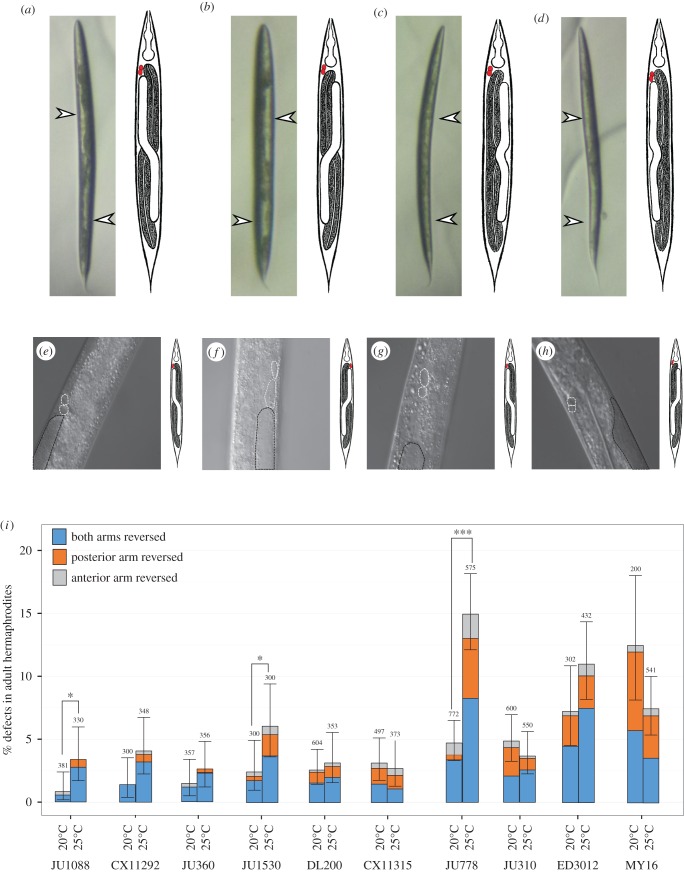Figure 4.
Temperature effect on hermaphrodite heterotaxy. (a–d) Ventral view of hermaphrodites (anterior up). White arrows denote position of gonad arms, which are visible as clear patches under the dissecting scope. Adjacent cartoons denote the type of heterotaxy observed, as described in figure 1. (a) Dextral hermaphrodite from isolate JU778. (b) Reversed hermaphrodite from isolate JU778. (c) Posterior heterotaxy from isolate JU778. (d) Anterior heterotaxy from isolate JU778. (e–h) Higher magnification DIC images showing the anterior coelomocytes ccAR and ccPR (white dashed lines) and anterior portion of gonad arm (black dashed lines; N2). (e) Dextral hermaphrodite from isolate N2. (f) gpa-16(it143) hermaphrodite with fully sinistral handedness (situs inversus totalis). Note that both the anterior gonad arm and the coelomocyte pair ccAR and ccPR are on the left side. (g) Dextral hermaphrodite from isolate JU778. (h) Complete heterotaxy in hermaphrodite from isolate JU778. The coelomocyte pair ccAR and ccPR remain on the right side of the animal, but the gut and gonad positions are reversed. (i) Frequency of each class of heterotaxy in hermaphrodites from a subset of C. elegans isolates cultured at 20°C and 25°C. Black lines represent 95% binomial proportion confidence intervals calculated using Clopper–Pearson/exact method. Pooled sample size is noted above each condition (n ≥ 3 replicates per isolate). Fisher's exact test was used to compare frequencies of heterotaxy at 20°C and 25°C for each isolate. (*p < 0.05, **p < 0.01, ***p < 0.001.)

